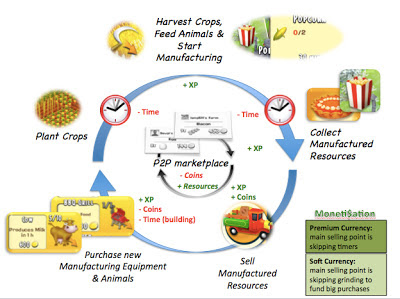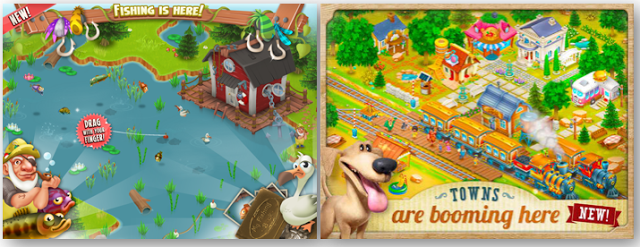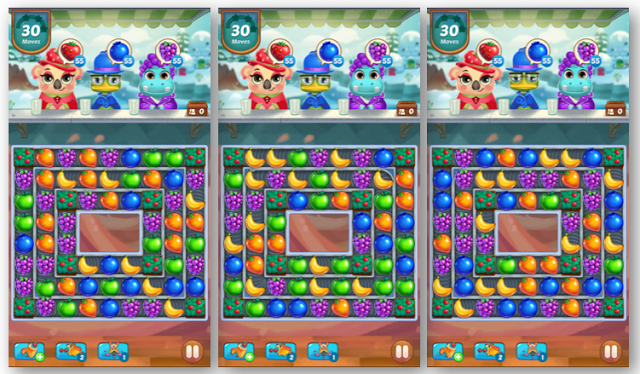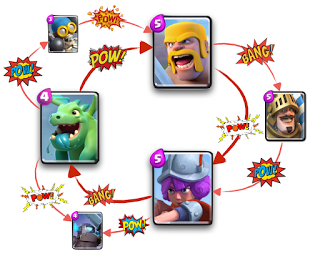How to avoid the transformation of a shareware game into a pipeline for the submission of content, – he told Michail Katkoff, head of FunPlus Studio. Translated the text, we share.
Some time ago, in a game review, I noted that the game in question risks turning into a content production pipeline and that the team of this project is not focused on creating game content in such quantities. They objected to me: “Aren’t all games pipelines these days?”
Many developers who have no experience in long-term support of a successful game service either do not understand exactly how their interaction with the game should change after launch, or simply recruit a large team and believe that this is enough to launch a shareware project without problems. In this text, I will analyze several freeplay projects and tell you which mechanics reduce the amount of necessary content. In addition, I will consider several games that use additional content so effectively that they practically do not risk turning into a pipeline at all.
Classic content production pipeline
Games with levels are classic content production pipelines. This is because in such projects, the goal is to pass the next level in order to gain access to content and move forward. In theory, the more levels you have, the longer the user will play the game. And, again, in theory, the more time a player spends in the game, the higher the probability that he will start paying. That is, it is vital to create new and new content. That’s how the game turns into a conveyor.
Consider, for example, a classic fritupley farm. In Hay Day, players plant plants and feed animals to then get ingredients that can be turned into different dishes and sold for coins. Selling food is the main source of experience points (exp). As soon as the player accumulates the right amount of exp, his level will increase. The next level opens access to new plants, animals, dishes, ways of making dishes and locations. In other words, the player’s goal is to simultaneously earn the necessary amount of coins to build another farm, and gain enough experience to open new content.
By performing actions from the game cycle, the player earns an exp, which makes it possible to move to a new level. New levels open access to new content and gameplay
To keep the player interested, the Hay Day team — or any other farm— must constantly create new levels and content. If the content delivery slows down, the most involved players, who are often the most valuable, will have nowhere to move. In addition to the fact that the team must create content at a certain speed, it must figure out how to surprise the player. Simply offering new recipes and ways to implement them is not enough. It is necessary to periodically demonstrate completely new and interesting content. And as we all know, in order to come up with something new and interesting, you need more time for design, development, QA and, eventually, release.
New content is regularly added to the game. This content should contain new gameplay elements – so players will not lose interest in the game
It is possible to create a successful fritupley project with levels if the team is focused on this task. Studio management should have the appropriate skills, and processes should be set up so that the studio can quickly and smoothly produce inexpensive content. Often in the end it turns out that the team increases in size, and the development process becomes quite monotonous. Therefore, developers who are at the very beginning of their careers are often hired in such studios.
Unlike shareware games, in the case of paid projects, progress does not create difficulties due to levels. Premium games are not designed for long-term operation, because the players in such games are already monetized. Moreover, developers usually even want players to reach the end of the game, because then they can sell additional content.
How to slow down the speed of content consumption
The easiest way is to just say — don’t make games that depend too much on new content. But what if you already have a successful game where players move very quickly through the levels, and you can’t get them to move in a certain rhythm? In this case, there are two ways out. The first is to increase the amount of content. But this option will quickly lead to the fact that the team will grow, and, consequently, development costs will increase. Another approach is to increase the replayability of levels and ensure that existing content is used longer. Two of my favorite ways to slow down the rate of content consumption are completion mechanics and dynamic tuning.
1. Completion mechanics encourage players to replay the level until they reach the ideal. If this mechanic is applied correctly, the player will want to replay the level in order to get additional content for it. Thus, the levels become replayable, and it takes more time to complete them. Which reduces the need for additional levels and increases engagement.
Angry Birds Rio rewards the player for completing the level to the end. As a result, the replayability of the levels increases, and at the same time monetization increases, since the player needs more power-ups
When I was the lead on Angry Birds Rio, I faced a difficult task: our players liked the game, and they constantly demanded new levels from us, but our team was small and released no more than 30 levels monthly. And the most enthusiastic players passed them in just a couple of hours.
To solve this issue and at the same time increase monetization, we offered players “Star Levels” (Star Levels). They were opened after the player collected a certain number of stars in each episode (set of levels). This feature has increased replayability and engagement: users suddenly have a reason to go through the levels.
We not only introduced content that required players to have a certain level of skill. We also gave players a way to complete the three-star levels without having the appropriate skills. The user had two ways to purchase power-ups. You could get them as daily bonuses, which encouraged players to log into the game every day, or you could buy them in the in-game store, which increased monetization. Naturally, after the introduction of “Star Levels” and power-ups, engagement increased, and monetization increased.
2. Dynamic customization is another mechanic that not only makes the levels more replayable, but also significantly increases engagement and monetization. This method has its limitations: the game must have a random set up in accordance with the behavior of the player. Another limitation is that the method requires a data processing specialist who will analyze the numbers and customize the game.
The pictures above show the same level in Juice Jam. As you can see, although the level is the same everywhere, the starting elements are different — thanks to the dynamic setting. This setting makes the level harder or easier depending on how fast the player moves forward.
Match-3 games are a great example of how dynamic tuning works. Every time a player restarts a level, the chips that need to be moved change. That is, the difficulty of the level can be adjusted according to the behavior of the player. Usually, for this purpose, users are divided into certain cohorts.
This is how dynamic tuning works. Let’s say you haven’t played Candy Crush Saga for a while. After returning, you will most likely easily pass a couple of levels, because the game adjusts the levels so that it is easier for you to get involved in the process. As soon as you join, the levels will quickly become more difficult — and so on until you come across a level where you get stuck. You will be encouraged to spend money to go further. If you refuse, then the level will eventually become easier and you will be able to move forward.
3. Energy mechanics is the third option that allows you to slow down the rate of content consumption. Both as a player and as a game creator, I am an ardent fan of this mechanic.
Energy mechanics slows down the speed at which the player passes levels, adds virality to the game through social integration and increases monetization.
This mechanic allows the player to finish the game session with a sense of satisfaction. It also does not let you get tired of the game, because it does not allow the player to go through a particularly difficult level until he gets angry and leaves the game.
The introduction of this mechanics allows the game developer to achieve the growth of some key metrics. Firstly, since the player plays several times a day and returns to the game when the energy is replenished, the number of gaming sessions and the overall retention rate increases. Secondly, this mechanic increases monetization, because during the so-called binge-sessions, players usually buy additional energy in order not to be interrupted. Some developers consider such mechanics harmful because it artificially limits the game time. Taking into account the fact that many games that have embodied such mechanics are very successful, I don’t think this is really the case. In fact, many mobile games have such mechanics perfectly suited.
All three mechanics described above help levels and/or content to last longer. Which of the mechanics is suitable for the game depends on the genre and on what stage the project is at. For example, adding energy mechanics to an already running game is a sure way to get a negative review.
How to avoid turning the game into a pipeline
Many studios dream of coming up with a game service that would not depend on the uninterrupted supply of content. If you do not depend on the content, you can spend the resource to come up with new interesting features. In order not to turn the game into a pipeline for the submission of content, you need to strive for this from the very beginning.
In my opinion, in order to avoid turning the game into a pipeline, it is important to come up with a good meta-game and complement it with social gameplay.
Unfortunately, the concept of a meta-game is often used to describe literally everything, from competition to gacha mechanics. In fact, a meta—game is a strategy, action, or method that goes beyond the basic set of rules of a particular game. In other words, changes in the meta-game directly affect how players play the game.
From my point of view, Clash Royale is one of the best examples of a successful mobile game with a strong meta—game that reduces dependence on new content. To win a match in Clash Royale, you need both the right strategy for the meta-game and skill. Strategy is required to assemble the deck. The player must control the average value of the cards in the deck and make sure that there are different types of cards in it. Skill is needed in order to apply the right card at the right time and in the right area of the playing field.
The whole purpose of the Clash Royale meta—game is to assemble a balanced deck of 8 cards. Instead of focusing on special cards, the player needs to make a deck in which the cards will strengthen each other. The point is that each card interacts with the others in such a way that the result is an ideal flow of attacks, defenses and counterattacks. Collecting a deck is especially interesting because the cards are very well balanced. This means that almost every opponent on your way will have their own special card combination. In addition, the meta-game is constantly changing. As the player collects cups and participates in battles, he gets new cards and faces all new opponents who use these cards.
Each card in Clash Royale has its own strengths and weaknesses. The goal of the meta—game is to balance the deck with an ever-increasing number of cards
Just like in Clash of Clans, the meta-game in Clash Royale is very well balanced. There is not a single card that is completely equivalent to the other. This almost perfect balance is especially noticeable in the matches of top players on Royale TV. No high-level deck is like any other. The search for the perfect combination constantly forces players to change their deck.
But how exactly does an almost perfectly balanced meta-game prevent Clash Royale from becoming a content production pipeline? A balanced meta-game implies that each card has its own place in the game. As soon as a new card is added, the total balance changes. The player has to either start using a new card, or add an additional card to the deck and/or change the game strategy to balance the action of the new card. That is, one new card is able to completely change the game process. In terms of impact, it has a greater effect than 100 additional levels in the pipeline game, where a minority of players will get to these levels when they are added.
Although sometimes even a strong meta-game and social gameplay is not enough to avoid the pipeline. Take, for example, Vainglory from Super Evil Megacorp. The meta—game in this project is one of the most thoughtful and balanced among all games for touch devices. And the game is as social as it is possible at all — in it two teams of three people participate in a synchronized duel. But due to the fact that Vainglory lacks progress mechanics, such as card upgrades in Clash Royale, and competitive mechanics, such as the Arena in Hearthstone, the game turns into a conveyor belt for the monthly release of new heroes. And how important new characters are in Vainglory can be understood by the way the game takes off and falls in the box office rating after each update.
Use the content wisely
If the game depends on the uninterrupted supply of new content, this, without a doubt, complicates matters. But this does not mean that the project will not be successful. Take the same King and its puzzles, each of which depends on constant updates. Candy Crush Saga alone probably has about a thousand levels (actually two thousand, — approx. editors), and still 15 new ones are added to it every two weeks.
In this text, I analyzed how to reduce dependence on new content, increasing the value of existing content. There are several large publishers who can afford to simply hire new and new people, but in general, this practice only creates additional problems in the future.
To sum up: you need to avoid games with a lot of content, unless your studio is specifically tailored for the production of such projects. The reason why so many developers are still creating pipeline games, in my opinion, is solely a lack of experience in creating, analyzing and configuring meta-games. Making games where progress depends only on levels is much easier. But as we all know perfectly well, creating and launching a game is only half the battle. The most interesting thing begins later.
Source: Deconstruction of Fun







